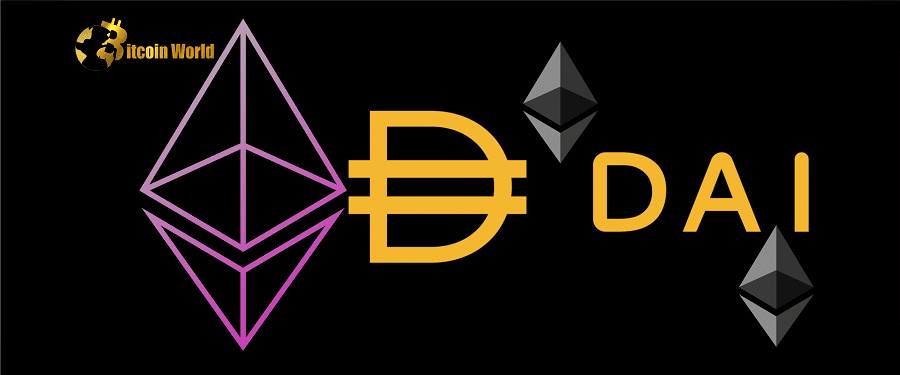In the ever-evolving world of cryptocurrency, decentralization remains a core principle. Recent events, like the FTX collapse, have only underscored the importance of moving away from centralized systems. Enter Vitalik Buterin, a co-founder of Ethereum [ETH], who recently highlighted a potentially game-changing solution for the platform’s future: Decentralized Autonomous Organization (DAO) stablecoins.
Why DAO Stablecoins? Vitalik Buterin Thinks They’re Key
According to a recent statement on December 5th, Buterin believes that DAO-governed stablecoins could be “crucial” for Ethereum’s long-term prosperity. But why this emphasis on DAOs and stablecoins?
Buterin points to the inherent benefits of collateralization facilitated by DAO stablecoins. This mechanism is seen as a significant advantage, making them arguably the most suitable type of stablecoin for a truly decentralized ecosystem like Ethereum.
Examples and Considerations: RAI, DAI, and the Governance Factor
Delving deeper, Buterin mentioned specific examples and considerations:
- RAI: He acknowledged stablecoins like RAI, which boast a strong governance framework. However, RAI’s negative interest rate and perceived high risk of default made it a less viable option in his analysis.
- MakerDAO [MKR] and DAI: Buterin lauded MakerDAO and its stablecoin DAI as pioneering projects that could lead the way. He recognized DAI’s innovative nature but also pointed out existing challenges.
Despite acknowledging DAI’s initial success, Buterin cautioned against complacency. He stressed that MakerDAO’s current model might not be optimal for the long haul unless significant improvements in productivity are achieved. In his own words:
Maker is a fine model to get a stablecoin started, but not a good one for the long term. Hence, making decentralized stablecoins work long term requires innovating in decentralized governance that does not have these kinds of flaws.
This quote perfectly encapsulates Buterin’s vision: while existing models have paved the way, the future of decentralized stablecoins hinges on robust and innovative decentralized governance.
FTX Fallout: Why Decentralization Matters Now More Than Ever
The recent FTX collapse has undeniably shaken the crypto world, exacerbating existing concerns about centralized exchange deposits, particularly within the Ethereum community. Data from Santiment reveals a sharp decline in the supply of Ether held on exchanges.

As of the latest data, exchange balances show only 14.82 million ETH available. This dwindling supply underscores a growing trend: investors are increasingly seeking the security and self-custody offered by decentralized solutions. If DAO stablecoins can deliver on their promise of decentralization, it’s easy to see why investors might resonate with Vitalik’s perspective.
Ethereum’s On-Chain Health: A Deeper Dive
While the decentralized future looks promising, it’s essential to examine Ethereum’s current on-chain activity. Transaction volume on the Ethereum blockchain has recently seen a dip. Gas usage, a measure of network activity, has decreased to 16.78 billion cubic feet at the time of writing. This reduced network activity presents a challenge for ETH in terms of maintaining profitability.
ETH Price Analysis: Navigating Market Signals
Let’s take a quick look at Ethereum’s recent price performance and market indicators:
- 24-Hour Performance: According to CoinMarketCap, Ethereum experienced a 3.08% decrease in the last 24 hours.
- Relative Strength Index (RSI): On a four-hour chart, the RSI reading stands at 49.65. This suggests a neutral momentum, with potential for upward movement as it’s not in overbought or oversold territory.
- On-Balance-Volume (OBV): Despite a recent recovery from oversold conditions, the OBV signal strength remains weak at $1,757,000. This decline in OBV indicates persistent selling pressure, suggesting that buyers are struggling to gain a strong foothold.
- Directional Movement Index (DMI): The DMI further supports the indication of seller control. The negative DMI (red line) is positioned above the positive DMI (green line), reinforcing the dominance of sellers in the market.
- Average Directional Index (ADX): With an ADX of 28.38, ETH currently lacks strong trend strength, making a swift return to previous price levels challenging.

Looking Ahead: DAO Stablecoins as a Catalyst for Ethereum’s Future
Despite current market headwinds and on-chain activity fluctuations, Vitalik Buterin’s endorsement of DAO stablecoins offers a beacon of hope for Ethereum’s long-term trajectory. His vision emphasizes the critical need for innovation in decentralized governance to create truly robust and sustainable stablecoin models.
As the crypto space continues to learn from events like the FTX collapse, the push towards decentralization will likely intensify. DAO stablecoins, championed by figures like Vitalik Buterin, are positioned to play a pivotal role in shaping a more resilient and truly decentralized future for Ethereum and the broader crypto ecosystem. The journey may be challenging, but the potential rewards of decentralized, DAO-governed stablecoins are significant, offering a path towards greater stability, security, and user empowerment in the world of digital finance.
Disclaimer: The information provided is not trading advice, Bitcoinworld.co.in holds no liability for any investments made based on the information provided on this page. We strongly recommend independent research and/or consultation with a qualified professional before making any investment decisions.


